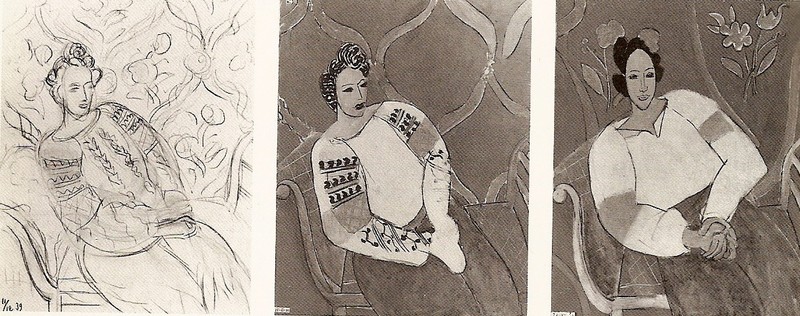Aurélie Verdier, curator of the exhibition "Matisse comme un roman" at the Centre Pompidou, is impatient... When will the public finally be able to enjoy the two hundred and thirty paintings she took two years to put together? This unique retrospective, organized on the occasion of the one hundred and fiftieth anniversary of the artist, and exploring the links between painting and literature, is constantly being postponed. We will discover, among others, this so beautiful Romanian Blouse, made in 1940.

This oil on canvas is the culmination of several years of preparatory work, ultra documented, on the theme of Slavic costume. Since 1935, Matisse has been working on this print typical of Eastern European countries. He photographed each step of his creative process, gradually reducing the details, simplifying the lines, the forms, in order to reach, finally, a purified and simplified representation of his model. The result he offers us is a perfect balance. One finds there the fluidity, the flexibility and the lightness of the blouse which contrasts with the geometrical shapes of the pattern. This perfect synthesis, the fruit of months of work, is extremely representative of the artist's work. With this painting, he opens the way to a whole generation. The research is no longer in the representation, or even the impression, but more in the balance. Matisse is looking for harmony. A certain agreement between his colors and his conception of the subject.


In an interview of October 1945 for Les Lettres Françaises, Henri Matisse details the stages of his work and explains: "I have my conception in my head, and I want to realize it. I can, very often, redesign it... But I know where I want to end up. The photographs of my work in progress allow me to know if the last design is more conforming than the previous ones, if I have moved forward or backward." Thanks to the very extensive documentation gathered during the retrospective organized at the Centre Pompidou, viewers will have the opportunity to understand all the work, the research, the almost "scientific" process that can take place prior to the realization of one of Henri Matisse's paintings. They, which sometimes seem so simple, reveal themselves to be incredibly profound. One remains amazed at the work of recomposition of each painting by the greatest colorist of the 20th century.



